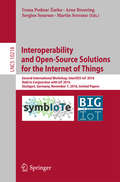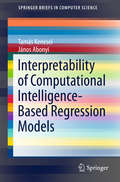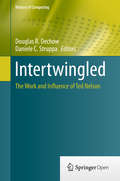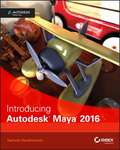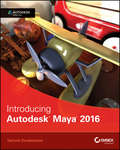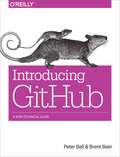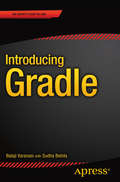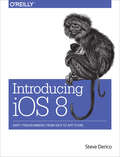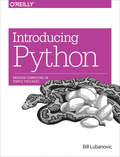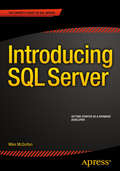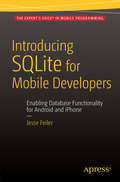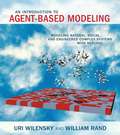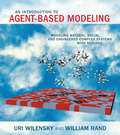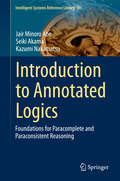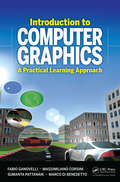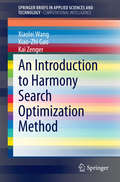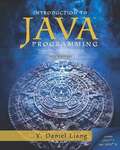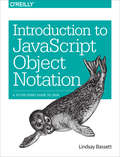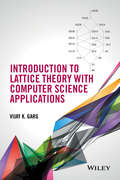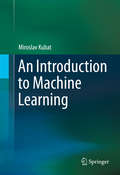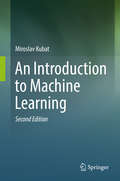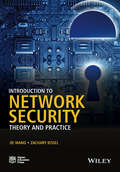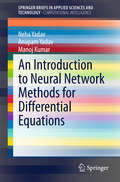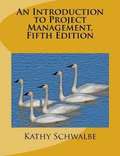- Table View
- List View
Interoperability and Open-Source Solutions for the Internet of Things
by Ivana Podnar Žarko Arne Broering Sergios Soursos Martin SerranoThis book constitutes the thoroughly refereed post-conference proceedings of the International Workshop on Interoperability and Open-Source Solutions for the Internet of Things, FP7 OpenIot Project, held in Conjunction with SoftCOM 2014, in Split, Croatia, in September 2014. The 11 revised full papers presented together with the extended abstracts of 2 keynote talks were carefully reviewed and selected from numerous submissions during two rounds of reviewing and improvement. The papers are organized in topical sections on OpenIoT platform, open platforms and standards, and IoT Applications.
Interpretability of Computational Intelligence-Based Regression Models
by János Abonyi Tamás KeneseiThe key idea of this book is that hinging hyperplanes, neural networks and support vector machines can be transformed into fuzzy models, and interpretability of the resulting rule-based systems can be ensured by special model reduction and visualization techniques. The first part of the book deals with the identification of hinging hyperplane-based regression trees. The next part deals with the validation, visualization and structural reduction of neural networks based on the transformation of the hidden layer of the network into an additive fuzzy rule base system. Finally, based on the analogy of support vector regression and fuzzy models, a three-step model reduction algorithm is proposed to get interpretable fuzzy regression models on the basis of support vector regression. The authors demonstrate real-world use of the algorithms with examples taken from process engineering, and they support the text with downloadable Matlab code. The book is suitable for researchers, graduate students and practitioners in the areas of computational intelligence and machine learning.
Intertwingled
by Douglas R. Dechow Daniele C. StruppaThis engaging volume celebrates the life and work of Theodor Holm "Ted" Nelson, a pioneer and legendary figure from the history of early computing. Presenting contributions from world-renowned computer scientists and figures from the media industry, the book delves into hypertext, the docuverse, Xanadu and other products of Ted Nelson's unique mind. Features: includes a cartoon and a sequence of poems created in Nelson's honor, reflecting his wide-ranging and interdisciplinary intellect; presents peer histories, providing a sense of the milieu that resulted from Nelson's ideas; contains personal accounts revealing what it is like to collaborate directly with Nelson; describes Nelson's legacy from the perspective of his contemporaries from the computing world; provides a contribution from Ted Nelson himself. With a broad appeal spanning computer scientists, science historians and the general reader, this inspiring collection reveals the continuing influence of the original visionary of the World Wide Web.
Introducing Autodesk Maya 2016: Autodesk Official Press
by Dariush DerakhshaniStart modeling right away with this hands-on guide to learning Autodesk Maya 2016 Introducing Autodesk Maya 2016 is the official guide to the most popular and complex 3D application on the market. Building from the ground up, this book combines straightforward text with practical examples that make it easy to absorb the basics and start designing and animating your own digital models and scenes. The tutorials offer realistic challenges and clear explanations, laid out in fun, step-by-step lessons that help you gain confidence and learn by doing. You'll delve into CG and 3D core concepts and production workflows, then get right to work designing an animation of the solar system as you learn the interface and basic tools. As your modeling skills grow, you'll build a steam locomotive, a starfish, a table lamp, and much more as you learn to rig your model for animation, create fabric motion with nCloth, and add the lighting and effects that bring your scenes to life. The companion website features downloadable project files that help you see how the pros do it, and the book includes real-world examples from talented users who were beginners just like you. Master the Maya 2016 interface, menus, and plug-ins Begin building simple animations right away Explore modeling, rendering, animation, and cloth motion Add lighting, rendering, dynamics, simulations, and effects If you want to work like the pros, Introducing Autodesk Maya 2016 is the perfect primer for getting started.
Introducing Autodesk Maya 2016: Autodesk Official Press
by Dariush DerakhshaniStart modeling right away with this hands-on guide to learning Autodesk Maya 2016 Introducing Autodesk Maya 2016 is the official guide to the most popular and complex 3D application on the market. Building from the ground up, this book combines straightforward text with practical examples that make it easy to absorb the basics and start designing and animating your own digital models and scenes. The tutorials offer realistic challenges and clear explanations, laid out in fun, step-by-step lessons that help you gain confidence and learn by doing. You'll delve into CG and 3D core concepts and production workflows, then get right to work designing an animation of the solar system as you learn the interface and basic tools. As your modeling skills grow, you'll build a steam locomotive, a starfish, a table lamp, and much more as you learn to rig your model for animation, create fabric motion with nCloth, and add the lighting and effects that bring your scenes to life. The companion website features downloadable project files that help you see how the pros do it, and the book includes real-world examples from talented users who were beginners just like you. Master the Maya 2016 interface, menus, and plug-ins Begin building simple animations right away Explore modeling, rendering, animation, and cloth motion Add lighting, rendering, dynamics, simulations, and effects If you want to work like the pros, Introducing Autodesk Maya 2016 is the perfect primer for getting started.
Introducing GitHub
by Brent Beer Peter BellIf you're new to GitHub, this concise book shows you just what you need to get started and no more. It's perfect for project and product managers, stakeholders, and other team members who want to collaborate on a development project--whether it's to review and comment on work in progress or to contribute specific changes. It's also great for developers just learning GitHub.GitHub has rapidly become the default platform for software development, but it's also ideal for other text-based documents, from contracts to screenplays. This hands-on book shows you how to use GitHub's web interface to view projects and collaborate effectively with your team.Learn how and why people use GitHub to collaborateView the status of a project--recent changes, outstanding work, and historic changesCreate and edit files through GitHub without learning GitSuggest changes to projects you don't have permission to edit directlyUse tools like issues, pull requests, and branches to specify and collaborate on changesCreate a new GitHub repository to control who has access to your project
Introducing Gradle
by Balaji VaranasiThis concise book is a quick-start primer on the Gradle build automation tool. It provides a general introduction to Gradle, including how to set it up and the basics of Groovy, the language used for creating Gradle build files. The book also provides practical guides to writing tasks and actions and to understanding the build life cycle. Furthermore, it takes you step-by-step through the creation and use of a custom plugin. After reading and using Introducing Gradle, you will have an understanding of Gradle's dependency management and how single and multi-projects are structured and configured. It also teaches you how to use Gradle for publishing artifacts to local and Nexus remote repositories. Finally, the book covers Jenkins support for Gradle. What you'll learn What Gradle is and how it compares with Ant, Maven, and more How to set up and test Gradle Basic Groovy language features What tasks and projects are How to use out-of-the-box plugins and create custom ones Dependency management with Gradle How to publish artifacts to local and remote repositories How to configure Jenkins to work with Gradle How multi-projects are organized Who this book is for This book is for programmers and build-automation engineers who are new to Gradle. Some exposure to Java is helpful but no knowledge of Groovy is required. Table of Contents 1. Introduction 2. Setting up Gradle 3. Groovy Language Primer 4. Understanding Gradle Builds 5. Projects and Plugins 6. Dependency Management 7. Multi-Project Builds 8. Publishing Artifacts 9. Continuous Integration
Introducing iOS 8
by Steve DericoLearn to make iOS apps even if you have absolutely no programming experience. This hands-on book takes you from idea to App Store, using real-world examples--such as driving a car or eating at a restaurant--to teach programming and app development. You'll learn concepts through clear, concise, jargon-free language.This book focuses on Apple's new programming language, Swift. Each lesson is divided into two parts: the lecture portion explains the terms and concepts through examples, and the exercise portion helps you apply these concepts while building real-world apps, like a tip calculator. Learn how to think differently--and see the world from a whole new perspective.Learn the basic building blocks of programmingDive into the Swift programming languageMake apps for iPhone and iPadUse GPS in your app to find a user's locationTake or select photos with your appIntegrate your app with Facebook and TwitterSubmit your app to the App StoreManage and market your app on the App Store
Introducing Python
by Bill LubanovicEasy to understand and fun to read, Introducing Python is ideal for beginning programmers as well as those new to the language. Author Bill Lubanovic takes you from the basics to more involved and varied topics, mixing tutorials with cookbook-style code recipes to explain concepts in Python 3. End-of-chapter exercises help you practice what you've learned.You'll gain a strong foundation in the language, including best practices for testing, debugging, code reuse, and other development tips. This book also shows you how to use Python for applications in business, science, and the arts, using various Python tools and open source packages.Learn simple data types, and basic math and text operationsUse data-wrangling techniques with Python's built-in data structuresExplore Python code structure, including the use of functionsWrite large programs in Python, with modules and packagesDive into objects, classes, and other object-oriented featuresExamine storage from flat files to relational databases and NoSQLUse Python to build web clients, servers, APIs, and servicesManage system tasks such as programs, processes, and threadsUnderstand the basics of concurrency and network programming
Introducing SQL Server
by Mike McquillanIntroducing SQL Server is a fast and easy introduction to SQL Server and the world of relational databases. You'll learn how databases work and how to use the T-SQL language by practicing on one of the most widely-used and powerful database engines in the corporate world: Microsoft SQL Server. Do you quake at the sight of a SELECT statement? Start to shiver when people start talking about tables and rows? Fear not, Introducing SQL Server is here to rescue you. The book focuses on the knowledge and skills needed to begin your journey toward becoming a solid and competent SQL Server professional and database programmer. You'll learn the core concepts of SQL Server, from installing the software to executing and profiling queries. Introducing SQL Server is aimed at SQL Server newcomers as well as at those wanting to improve their database skills. You'll put a comprehensive database together as you work through the book. You will create tables and learn to use constraints; create reusable functions and stored procedures; and even learn how indexes work and what they bring in terms of increased performance. Introducing SQL Server shows you that databases don't need to be difficult. Teaches you how to build a SQL Server database from scratch Takes a tutorial-based approach, with each chapter building on the last Covers what you need to know for common SQL Server development tasks What you'll learn Install SQL Server and customize your system Build databases and table Become conversant with the T-SQL language Import data using text files and T-SQL Program in T-SQL, creating stored procedures and functions Administer SQL Server at a basic level, including query and index management Who this book is for Introducing SQL Server is for anybody who wants to learn how databases are put together in Microsoft SQL Server. It's especially helpful to database newcomers, software developers who want to improve their SQL Server knowledge, and those whose SQL knowledge has lapsed over time. Introducing SQL Server's unique tutorial-led approach makes it a great choice for those who enjoy learning by doing. It's also a great reference book to keep on your desk. Table of Contents Chapter 1: What is SQL Server? Chapter 2: Obtaining and Installing SQL Server Chapter 3: Database Basics Chapter 4: Tables Chapter 5: Putting Good Tables Together Chapter 6: Automating Deployment with SQLCMD Chapter 7: NULLs and Table Constraints Chapter 8: Inserts, Updates, and Deletes Chapter 9: Bulk Inserting Data Chapter 10: Creating Data Import Scripts Chapter 11: The SELECT Statement Chapter 12: Joining Tables Chapter 13: Views Chapter 14: Indexes Chapter 15: Transactions Chapter 16: Functions Chapter 17: Table-Valued Functions Chapter 18: Stored Procedures - Part 1 Chapter 19: Stored Procedures - Part 2 Chapter 20: Bits and Pieces Chapter 21: Appendix A: SQL Data Types Chapter 22: Appendix B: Glossary Chapter 23: Appendix C: Common SQL Server System Objects Chapter 24: Appendix D: Exercises
Introducing SQLite for Mobile Developers
by Jesse FeilerThis brief book is a basic introduction to SQLite for iOS and Android developers. The book includes a simple introduction to SQL, a discussion of when to use SQLite, and chapters devoted to using SQLite with the most likely programming languages: Java, PHP, Swift and Objective-C. It then goes through adding simple database functionality to an Android or iOS app and finally a chapter on managing the app's life cycle. What you'll learn What You Will Learn:The basics of SQLite The SQL you need to use SQLite effectively How to integrate database functionality into your mobile app. How to maintain the app Who this book is for This book is for Android or iOS developers who wish to use a lightweight but flexible database for their applications. It assumes mobile development experience but does not assume any database knowledge. Table of Contents 1. Getting Up to Speed with Databases and SQLite 2. Understanding What SQLite Is. . . 3. Working with the relationship model and SQLite 4. Using SQLite basics -- storing and retrieving data 5. Using SQLite features -- What you can do with SELECT statements 6. Using SQLite with PHP 7. Using SQLite with Java (Android) 8. Using SQLite with Swift (iOS/Mac) 9. Using SQLite with Objective-C (iOS/Mac) 10. Exploring the simple database (used in Chapters 10-12) 11. Using the simple database with a website (database example code included) 12. Adding the simple database to an Android app (using android. database. sqlite) 13. Adding the simple database to an iOS app (using Core Data) 14. Considering performance issues 15. Managing the SQLite life cyle
An Introduction to Agent-Based Modeling: Modeling Natural, Social, and Engineered Complex Systems with NetLogo
by Uri Wilensky William RandThe advent of widespread fast computing has enabled us to work on more complex problems and to build and analyze more complex models. This book provides an introduction to one of the primary methodologies for research in this new field of knowledge. Agent-based modeling (ABM) offers a new way of doing science: by conducting computer-based experiments. ABM is applicable to complex systems embedded in natural, social, and engineered contexts, across domains that range from engineering to ecology. An Introduction to Agent-Based Modeling offers a comprehensive description of the core concepts, methods, and applications of ABM. Its hands-on approach -- with hundreds of examples and exercises using NetLogo -- enables readers to begin constructing models immediately, regardless of experience or discipline.The book first describes the nature and rationale of agent-based modeling, then presents the methodology for designing and building ABMs, and finally discusses how to utilize ABMs to answer complex questions. Features in each chapter include step-by-step guides to developing models in the main text; text boxes with additional information and concepts; end-of-chapter explorations; and references and lists of relevant reading. There is also an accompanying website with all the models and code.
An Introduction to Agent-Based Modeling: Modeling Natural, Social, and Engineered Complex Systems with NetLogo
by Uri Wilensky William RandA comprehensive and hands-on introduction to the core concepts, methods, and applications of agent-based modeling, including detailed NetLogo examples. The advent of widespread fast computing has enabled us to work on more complex problems and to build and analyze more complex models. This book provides an introduction to one of the primary methodologies for research in this new field of knowledge. Agent-based modeling (ABM) offers a new way of doing science: by conducting computer-based experiments. ABM is applicable to complex systems embedded in natural, social, and engineered contexts, across domains that range from engineering to ecology. An Introduction to Agent-Based Modeling offers a comprehensive description of the core concepts, methods, and applications of ABM. Its hands-on approach—with hundreds of examples and exercises using NetLogo—enables readers to begin constructing models immediately, regardless of experience or discipline. The book first describes the nature and rationale of agent-based modeling, then presents the methodology for designing and building ABMs, and finally discusses how to utilize ABMs to answer complex questions. Features in each chapter include step-by-step guides to developing models in the main text; text boxes with additional information and concepts; end-of-chapter explorations; and references and lists of relevant reading. There is also an accompanying website with all the models and code.
Introduction to Annotated Logics
by Jair Minoro Abe Seiki Akama Kazumi NakamatsuThis book is written as an introduction to annotated logics. It provides logical foundations for annotated logics, discusses some interesting applications of these logics and also includes the authors' contributions to annotated logics. The central idea of the book is to show how annotated logic can be applied as a tool to solve problems of technology and of applied science. The book will be of interest to pure and applied logicians, philosophers and computer scientists as a monograph on a kind of paraconsistent logic. But, the layman will also take profit from its reading.
Introduction to Computer Graphics: A Practical Learning Approach
by Fabio Ganovelli Massimiliano Corsini Sumanta Pattanaik Marco Di BenedettoTeach Your Students How to Create a Graphics ApplicationIntroduction to Computer Graphics: A Practical Learning Approach guides students in developing their own interactive graphics application. The authors show step by step how to implement computer graphics concepts and theory using the EnvyMyCar (NVMC) framework as a consistent example throughou
An Introduction to Harmony Search Optimization Method (SpringerBriefs in Applied Sciences and Technology)
by Xiaolei Wang Xiao-Zhi Gao Kai ZengerThis brief provides a detailed introduction, discussion and bibliographic review of the nature1-inspired optimization algorithm called Harmony Search. It uses a large number of simulation results to demonstrate the advantages of Harmony Search and its variants and also their drawbacks. The authors show how weaknesses can be amended by hybridization with other optimization methods. The Harmony Search Method with Applications will be of value to researchers in computational intelligence in demonstrating the state of the art of research on an algorithm of current interest. It also helps researchers and practitioners of electrical and computer engineering more generally in acquainting themselves with this method of vector-based optimization.
Introduction to Java Programming, Comprehensive Version
by Y. Daniel LiangThis text is intended for a 1-, 2-, or 3-semester CS1 course sequence. Comprehensive coverage of Java and programming make this a useful reference for beginning programmers and IT professionals. Daniel Liang teaches concepts of problem-solving and object-oriented programming using a fundamentals-first approach. Beginning programmers learn critical problem-solving techniques then move on to grasp the key concepts of object-oriented, GUI programming, advanced GUI and Web programming using Java. Liang approaches Java GUI programming using JavaFX, not only because JavaFX is much simpler for new Java programmers to learn and use but because it has replaced Swing as the new GUI tool for developing cross-platform-rich Internet applications on desktop computers, on hand-held devices, and on the Web.
Introduction to JavaScript Object Notation
by Lindsay BassettWhat is JavaScript Object Notation (JSON) and how can you put it to work? This concise guide helps busy IT professionals get up and running quickly with this popular data interchange format, and provides a deep understanding of how JSON works. <P><P>Author Lindsay Bassett begins with an overview of JSON syntax, data types, formatting, and security concerns before exploring the many ways you can apply JSON today.From Web APIs and server-side language libraries to NoSQL databases and client-side frameworks, JSON has emerged as a viable alternative to XML for exchanging data between different platforms. If you have some programming experience and understand HTML and JavaScript, this is your book.Learn why JSON syntax represents data in name-value pairsExplore JSON data types, including object, string, number, and arrayFind out how you can combat common security concernsLearn how the JSON schema verifies that data is formatted correctlyExamine the relationship between browsers, web APIs, and JSONUnderstand how web servers can both request and create dataDiscover how jQuery and other client-side frameworks use JSONLearn why the CouchDB NoSQL database uses JSON to store data
Introduction to Lattice Theory with Computer Science Applications
by Vijay K. GargA computational perspective on partial order and lattice theory, focusing on algorithms and their applications This book provides a uniform treatment of the theory and applications of lattice theory. The applications covered include tracking dependency in distributed systems, combinatorics, detecting global predicates in distributed systems, set families, and integer partitions. The book presents algorithmic proofs of theorems whenever possible. These proofs are written in the calculational style advocated by Dijkstra, with arguments explicitly spelled out step by step. The author's intent is for readers to learn not only the proofs, but the heuristics that guide said proofs. Introduction to Lattice Theory with Computer Science Applications: Examines; posets, Dilworth's theorem, merging algorithms, lattices, lattice completion, morphisms, modular and distributive lattices, slicing, interval orders, tractable posets, lattice enumeration algorithms, and dimension theory Provides end of chapter exercises to help readers retain newfound knowledge on each subject Includes supplementary material at www.ece.utexas.edu/~garg Introduction to Lattice Theory with Computer Science Applications is written for students of computer science, as well as practicing mathematicians.
An Introduction to Machine Learning
by Miroslav KubatThis book presents basic ideas of machine learning in a way that is easy to understand, by providing hands-on practical advice, using simple examples, and motivating students with discussions of interesting applications. The main topics include Bayesian classifiers, nearest-neighbor classifiers, linear and polynomial classifiers, decision trees, neural networks, and support vector machines. Later chapters show how to combine these simple tools by way of "boosting," how to exploit them in more complicated domains, and how to deal with diverse advanced practical issues. One chapter is dedicated to the popular genetic algorithms.
An Introduction to Machine Learning
by Miroslav KubatThis book presents basic ideas of machine learning in a way that is easy to understand, by providing hands-on practical advice, using simple examples, and motivating students with discussions of interesting applications. The main topics include Bayesian classifiers, nearest-neighbor classifiers, linear and polynomial classifiers, decision trees, neural networks, and support vector machines. Later chapters show how to combine these simple tools by way of "boosting," how to exploit them in more complicated domains, and how to deal with diverse advanced practical issues. One chapter is dedicated to the popular genetic algorithms.
Introduction to Network Security: Theory and Practice
by Jie Wang Zachary A. KisselIntroductory textbook in the important area of network security for undergraduate and graduate students Comprehensively covers fundamental concepts with newer topics such as electronic cash, bit-coin, P2P, SHA-3, E-voting, and Zigbee security Fully updated to reflect new developments in network security Introduces a chapter on Cloud security, a very popular and essential topic Uses everyday examples that most computer users experience to illustrate important principles and mechanisms Features a companion website with Powerpoint slides for lectures and solution manuals to selected exercise problems, available at http://www.cs.uml.edu/~wang/NetSec
An Introduction to Neural Network Methods for Differential Equations (SpringerBriefs in Applied Sciences and Technology)
by Manoj Kumar Neha Yadav Anupam YadavThis book introduces a variety of neural network methods for solving differential equations arising in science and engineering. The emphasis is placed on a deep understanding of the neural network techniques, which has been presented in a mostly heuristic and intuitive manner. This approach will enable the reader to understand the working, efficiency and shortcomings of each neural network technique for solving differential equations. The objective of this book is to provide the reader with a sound understanding of the foundations of neural networks and a comprehensive introduction to neural network methods for solving differential equations together with recent developments in the techniques and their applications. The book comprises four major sections. Section I consists of a brief overview of differential equations and the relevant physical problems arising in science and engineering. Section II illustrates the history of neural networks starting from their beginnings in the 1940s through to the renewed interest of the 1980s. A general introduction to neural networks and learning technologies is presented in Section III. This section also includes the description of the multilayer perceptron and its learning methods. In Section IV, the different neural network methods for solving differential equations are introduced, including discussion of the most recent developments in the field. Advanced students and researchers in mathematics, computer science and various disciplines in science and engineering will find this book a valuable reference source.
Introduction to Photography: A Visual Guide to the Essential Skills of Photography and Lightroom
by Mark GalerThis book is intended to be the primary textbook to support any college who would like to run a Photography 101 course for students. The course is designed to offer tutors an independent learning tool to enable students to learn the craft of using an interchangeable lens camera (DSLR or Mirrorless) and the basics of an image-editing program (Adobe Lightroom) to enable them to take creative control of the imaging process. The curriculum offers a step-by-step and jargon-free approach to learning the fundamental skills of creative camera control. Each page features a large image with a brief explanation of how the creative controls of the camera have led to the resulting visual appearance of the image. Information on each page is stripped down the essentials and text is carefully selected to be unambiguous and kept to the bare minimum to ensure rapid acquisition of the skills on offer. This effective course-in-a-book allows students quickly to become technically proficient, and instructors to efficiently evaluate students' progress.
An Introduction to Project Management
by Kathy SchwalbeThe fifth edition of An Introduction to Project Management provides a separate chapter for planning integration and scope management and for planning time and cost management. Additional examples are provided for creating work breakdown structures and schedules. It also includes information on Basecamp, a free web-based project management tool, along with a user guide (replaces AtTask in Appendix B). In addition to updating many references and examples, this edition continues to include several popular features: - Follows the Project Management Institute's PMBOK® Guide, Fifth Edition (2013) - Has chapters for each process group and a comprehensive case study to illustrate applying tools and techniques throughout the project life cycle - Includes a Guide for using Microsoft Project 2013 - Provides a free trial of MatchWare's MindView Business software (www.matchware.com/intropm), a tool for creating mind maps, Gantt charts, and other project documents - Uses real-world examples and references, including opening cases and case wrap-ups, examples of what went right, what went wrong, media snapshots, best practices, and video highlights in each chapter - End of chapter materials include chapter summaries, quick quizzes, discussion questions, and exercises, with case studies provided in Appendix C -Comprehensive, secure instructor site available with lecture slides, solution files, test banks, etc. -Free Web site includes over fifty template files, online quizzes and games, data files for Project 2013, links to sites mentioned in the text, and much more.
